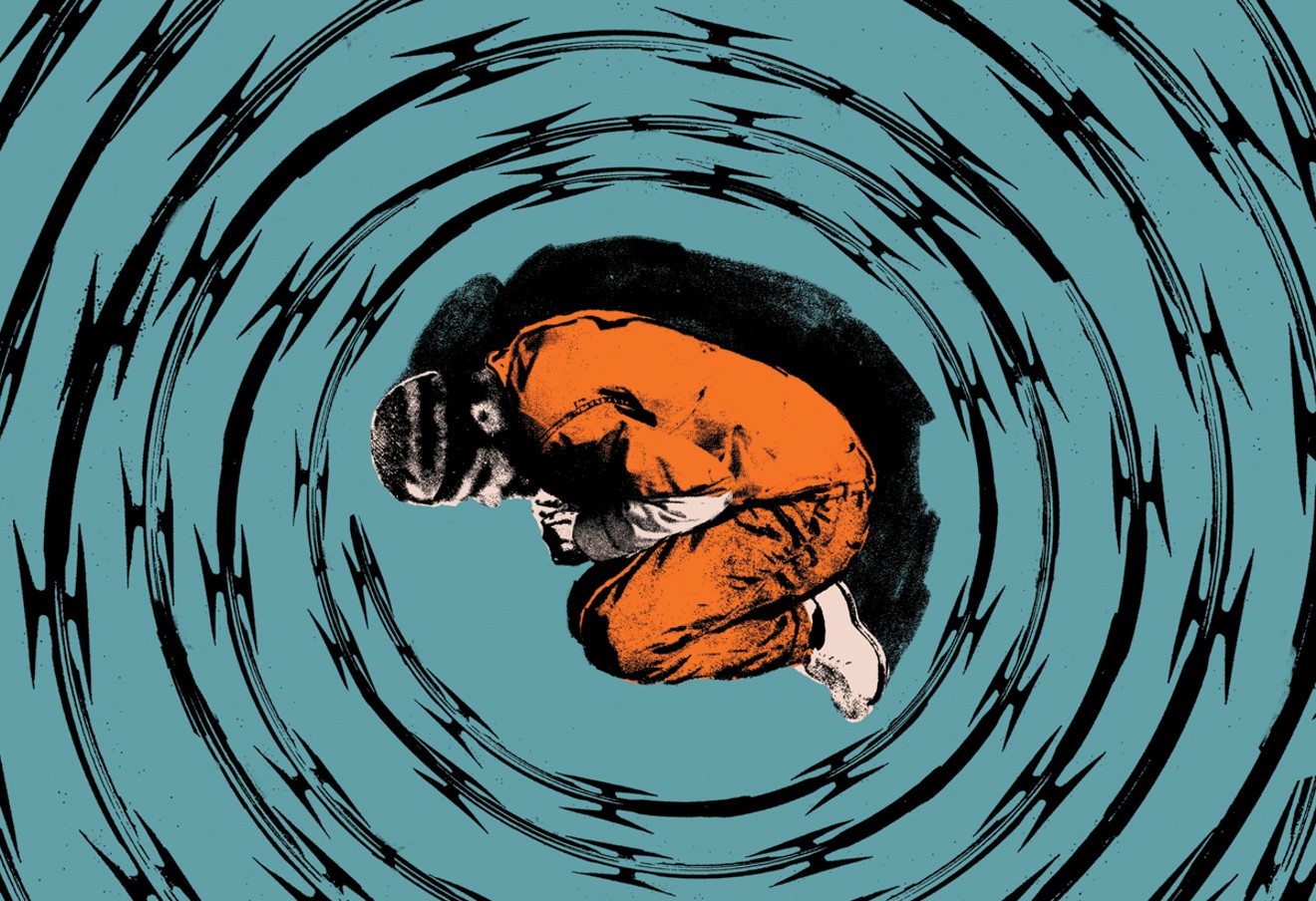Some of them have long, Arabic names. The journalists prefer nicknames. The Shoe Bomber. The Blind Sheikh. The American Taliban. You see them or you hear about them, just for a moment, and then they are gone, as if the earth swallowed them.
Where do they go, these men? What happens to them after judgment is passed and they are sent away?
There may or may not be a special place in hell for terrorists, but there is a special place in Colorado for them — a place for jihadists, conspirators, suppliers of material aid, failed suicide bombers, self-styled avengers, guerrilla leaders and more. Its name is H Unit.
H Unit is the most restricted area in the U.S. Penitentiary Administrative Maximum, or ADX, the highest-security pen in the federal prison system. Located a hundred miles southwest of Denver, just outside the high-desert town of Florence, the “Alcatraz of the Rockies” is known for housing gang leaders, drug lords and other high-risk prisoners in 22-hour-a-day lockdown. (Officially, the U.S. Bureau of Prisons doesn’t hold prisoners in solitary confinement; the agency prefers the term “restrictive housing.”)
A former warden once described ADX as “a clean version of hell.” In recent years, civil rights attorneys have argued that the prison was more like a filthy version of hell — a place where mentally ill men mutilated themselves, talked to ghosts and festered in feces-caked isolation cells for months, until a lawsuit forced the U.S. Bureau of Prisons to move its most acutely psychotic prisoners out of ADX.
But H Unit is another level of hell altogether. It’s a prison within a prison, yet that doesn’t quite convey the unique conditions of confinement there. It’s been called the only known black site on American soil, but it’s more like a black hole, a void where men are slowly buried alive in layers of isolation until they vanish entirely.
Every occupant of H Unit is subject to Special Administrative Measures, a designation made by the U.S. Attorney General for prisoners who are deemed to pose a serious, ongoing threat to public safety and national security. SAMs prisoners aren’t allowed to talk to the media or just about anybody else on the planet, because of concerns that they might send coded messages to criminal or terrorist organizations around the globe. The only contacts they are permitted on the outside consist of a few government-approved family members and their attorneys — all of whom are also sworn not to divulge anything the prisoner communicated to them, under threat of facing prosecution themselves.
Mail, phone calls, media consumption and family visits are all tightly restricted and monitored; the FBI and the BOP have translators who listen to every call and review every letter, whether it’s in English, Arabic or Swahili. Before some modifications implemented in recent years, many SAMs prisoners were not allowed to watch news broadcasts and received newspapers only after a thirty-day embargo; the government’s position, as articulated in court documents, was that media reports about current affairs or international conflicts “can serve to inflame a terrorist inmate’s radical tendencies and possibly incite him to engage in disruptive conduct within the institution.”
Out of 156,000 inmates in BOP custody, there are an estimated forty to fifty prisoners under the SAMs restrictions. Nearly all of them are in H Unit.
The first rule of SAMs is that nobody involved can talk about SAMs. The entire process is so shrouded in secrecy that it’s difficult to ascertain even the names of the SAMs inmates. But every once in a while, through a court document or a human-rights report, some information about the program slips out — like the story of Umar Farouk Abdulmutallab, better known as the Underwear Bomber.“Some prisoners tell me to shut off my cell light and never use it because it emits harmful radiation. These prisoners live in dark cells day and night.”
tweet this
The son of a wealthy Nigerian banker, Abdulmutallab became radicalized while still in his teens. He eventually made contact with the cleric Anwar al-Awlaki, the so-called “bin Laden of the Internet,” who was later killed in a drone strike in Yemen. On Christmas Day 2009, at the age of 23, Abdulmutallab flew from Amsterdam to Detroit; toward the end of the flight, he attempted to activate an explosive device sewn into his underwear. He succeeded in starting a fire in his pants, searing his thighs and genitalia but failing to injure anyone else before he was subdued by other passengers. He pleaded guilty to all of the counts against him and received multiple life sentences.
Abdulmutallab arrived at ADX in the spring of 2012, after brief stays in solitary at two other prisons. Like other devout Muslim prisoners, he had his share of complaints about the way the BOP messed with his efforts to practice his religion — no access to a halal diet, corrections officers mocking him and desecrating his Quran and prayer rug, humiliating strip searches in front of female staff, and so on — but the SAMs restrictions made the situation much worse.
The cells in H Unit are 75 square feet, slightly smaller than the typical ADX cell because of the absence of a shower. The H Unit prisoners are escorted to a shower several days a week, but lockdowns and staffing issues can disrupt that routine. Bathing before formal prayers is an expected rite of purification in Islam, one that Abdulmutallab could no longer follow with any regularity. Nor could he participate in his religion’s group prayers, jummah, required once a week but prohibited under SAMs. The H Unit residents also have little access to the contract imam who occasionally visits the prison. Instead, Abdulmutallab complained, he was expected to pray alone in his cell, under a barrage of taunts, curses and harassment from guards and white supremacists on the same tier. (Although H Unit is predominantly Muslim, some white gang leaders are also under SAMs.)
He found himself cut off from friends and relatives with whom he’d previously been allowed to correspond. For four years, he couldn’t write to his own sister, a prohibition no one could explain. The letters that weren’t rejected would take months to make their way through the screening process. Books he’d ordered from Amazon were rejected, for reasons that remained a mystery — including the self-help bestsellers The Life-Changing Magic of Tidying Up: The Japanese Art of Decluttering and Organizing and 168 Hours: You Have More Time Than You Think.
Abdulmutallab, who has more time than anybody can comprehend, decided to protest his treatment by engaging in a hunger strike. A few months after his arrival in H Unit, he refused to touch his food trays for three days. He was shackled and taken to the medical unit; when he refused treatment, he was strapped into a six-point restraint chair. Officers held his head rigid while a feeding tube was inserted into his nose and down his throat. He was pumped full of an Ensure-like liquid supplement until he began to vomit.
After three more forced feedings, he abandoned his strike. He renewed it two months later, only to go through another series of forced feedings and be moved for six weeks to Range 13, to an even more isolated cell than anything in H Unit.
He tried again in 2015. This time the force-feeding team mistakenly stuck the tube down his trachea into his lungs instead of his esophagus. He felt like he was drowning. He had trouble breathing for days after the feeding. In a lawsuit filed last fall, challenging the SAMs restrictions, his attorney describes Abdulmutallab’s force-feeding as a form of torture “akin to waterboarding.”
During his 2016 presidential campaign, Donald Trump promised to bring back waterboarding “and a hell of a lot worse” for America’s enemies, a vow he’s repeated since taking office. No one, apparently, has briefed him about what’s been going on in H Unit for years, or why the SAMs program strikes some human-rights advocates as akin to waterboarding — and possibly a hell of a lot worse.
“SAMs makes the isolating conditions of solitary all the more so,” says Laura Rovner, a University of Denver law professor who’s been involved in several court cases over solitary confinement at both the state and federal supermax prisons. “It really has a way of disappearing people.”
Rovner and a few other attorneys have challenged the constitutionality of SAMs on behalf of several H Unit prisoners. The cases have drawn barely a blip of media attention — possibly because the plaintiffs are among the most despised in the entire federal prison system — and have failed to bring about any dramatic changes in the way the restrictions are imposed. Yet the litigation has raised provocative questions about the rationale for the security measures (and for keeping them in effect, in some cases, for decades); about the obstacles facing SAMs prisoners as they try to communicate with their attorneys; and about the debilitating effects of extreme isolation.
“Abuse of prisoners thrives in secrecy,” states the complaint filed in federal court on behalf of Abdulmutallab. “Mr. Abdulmutallab experiences life in the H Unit at ADX as a struggle to avoid becoming mentally ill.”
The cases provide firsthand accounts, from otherwise voiceless prisoners, of what it’s like to live under SAMs. They are stories of a journey to oblivion — a slow, relentless whittling away of family ties, memories, hopes and even a sense of self, and a descent into confusion and stupor.
“The prisoners around me in H Unit — each one lives in his own bubble or reality,” states a declaration filed by Nidal Ayyad, another SAMs inmate. “Some of them have been under SAMs for ten years. Five years ago, if someone told me some of the things I hear in H Unit, I would have thought they were crazy and wouldn’t have listened to them. Now I’m listening.
“Some prisoners tell me to shut off my cell light and never use it because it emits harmful radiation and the TV screen emits the same. These prisoners live in dark cells day and night. Now I wonder if what they say is true. Some say that hot water is poisonous and harmful. Some believe the SAMs will be on us until we die.”
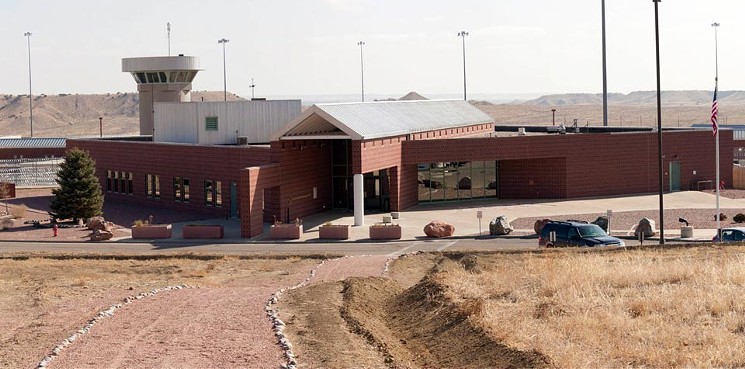
He soon changed his mind. The men displayed unmistakable signs of paranoia, delirium and extreme agitation, including acute sensitivity to noise and light. They were prone to revenge fantasies and random violence, much of it self-directed. At the same time, they minimized their symptoms, even rationalizing away suicide attempts, not wanting to admit that the isolation was “getting” to them. To his astonishment, Grassian soon learned that there was a substantial body of research stretching back over decades about the harmful effects of solitary confinement, including studies of astronauts and the use of solitary to break political prisoners. He soon published his own paper about what he called “SHU [Special Housing Unit] Syndrome.”
“I was not the discoverer,” Grassian noted recently. “The syndrome has been known for 150 years. It’s unassailable that solitary confinement causes psychiatric harm.”
Grassian’s remarks came in the course of a recent symposium titled “Rethinking Solitary Confinement,” organized by the John Jay College of Criminal Justice, that presented an array of criminal justice professionals, academics, journalists, and former prisoners turned activists. After decades in which most state corrections systems basically ignored the findings of Grassian and other medical experts, choosing instead to greatly expand their use of isolation units and supermax prisons, the practice is now under intense scrutiny. Critics on the left and the right have assailed the overuse of solitary as inhumane, counterproductive, a waste of resources — and a public safety risk, since most prisoners will eventually be released, often with little preparation for their return to society.
The Colorado Department of Corrections has been in the vanguard of the reform movement, moving hundreds of mentally ill prisoners out of “administrative segregation” and into “residential treatment units” — a program that was greatly expanded in response to the 2013 murder of its executive director, Tom Clements, by a parole absconder who’d spent years in solitary and was released directly to the streets. The effort to remove the mentally ill from solitary has even reached ADX.
But all the talk of reform hasn’t changed anything in H Unit.
A report released last fall by the Center for Constitutional Rights and Yale Law School found that the number of SAMs cases in the federal prison system increased significantly over the past seventeen years, from sixteen cases in 2001 to thirty in 2009 to 51 in 2017. Shortly after the 9/11 attacks, the BOP moved quickly to isolate prisoners who had some link to terrorist activities — including several who’d been housed in the mainstream prison population without incident for years. Many of them eventually ended up in H Unit under SAMs; in addition, the regulations were changed so that the measures had to be reviewed and renewed only once a year instead of every 120 days.
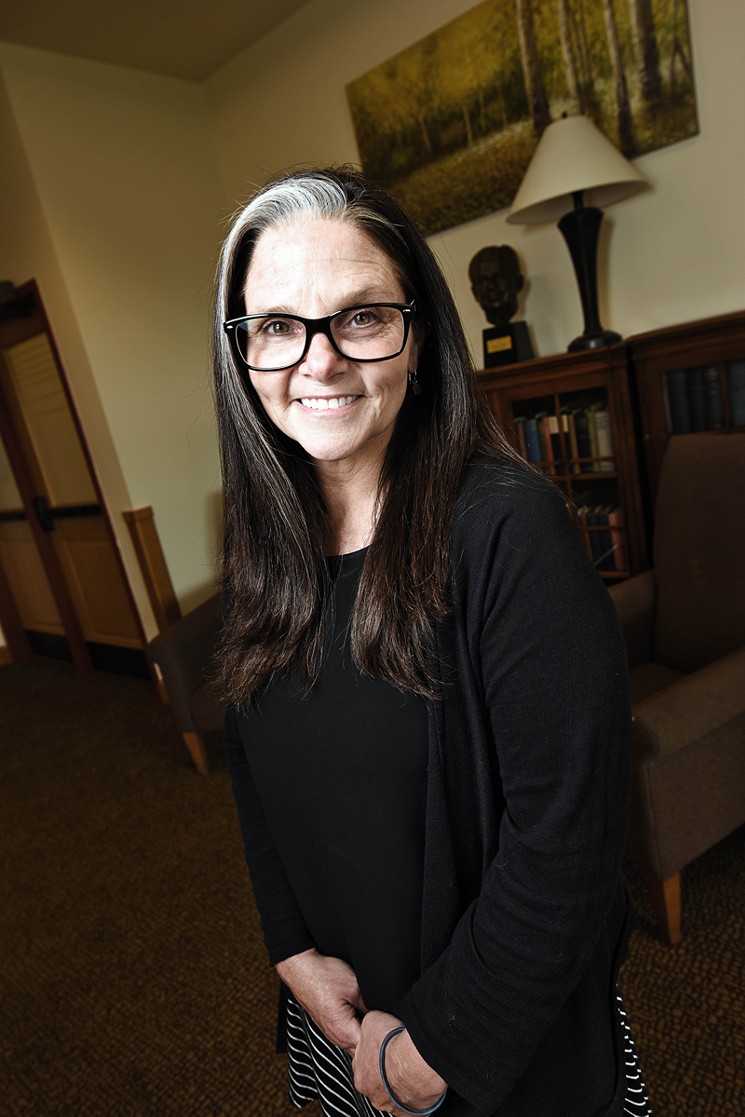
Rovner says the tough restrictions discourage attorneys from taking such cases, as she found out when she tried to find someone to replace her on one SAMs lawsuit. “We approached lots of lawyers,” she recalls. “Several of them said to us, ‘I can’t expose my firm or myself to this kind of scrutiny.’ Not that they’re doing anything wrong. But this is a license to invite the government to pry much more into the work you’re doing. Even if you don’t feel scared and paranoid, it’s an incredible hassle to represent people who are incarcerated. When you add this layer on top of it, it becomes exponentially more complex.”
“I always assume my phone, my fax, my email is being looked at. A lot of attorneys who do this make that assumption.”
tweet this
The SAMs regulations don’t allow the BOP to eavesdrop on attorney-client visits or calls. But Rovner says many attorneys who get involved in SAMs cases suspect that they’re under some sort of surveillance. “The problem is there’s no way to know,” she says. “That’s part of the anxiety that lawyers have. If someone is looking at my email or listening to my phone, what about my other clients? Am I exposing all of them?”
Bernard Kleinman, a New York-based attorney who’s been involved in defense work on behalf of SAMs cases and other high-security prisoners since the 1990s, has grown accustomed to such anxieties. “I always assume my phone, my fax, my email is being looked at,” he says. “A lot of attorneys who do this make that assumption; they’ll have meetings in places where they can’t be overheard. I’ve never had any qualms about it. I can understand why some people don’t want to do it, but I think these individuals, whatever they’ve been convicted of, deserve the same due-process rights that anyone else deserves in this country.”
Yet the central concern about the SAMs program isn’t the problems it poses for attorneys, but the long-term effect it has on their clients. “Given that SAMs create isolation even more extreme than that of standard solitary confinement, the substantial risks of permanent harm are only heightened,” the CCR report observes.
One of Kleinman’s clients has been in solitary confinement since 1995 and under SAMs longer than any other resident of H Unit: Ramzi Yousef, one of the principals in the 1993 World Trade Center bombing, which killed six people and injured more than a thousand others. Yousef is now in the twentieth year of his two life sentences. A few years ago, Kleinman mounted a challenge to the SAMs restrictions in Denver’s federal court, arguing that they are extreme, punitive and unnecessary, given how long Yousef has been cut off from his ties to terrorism networks, including his uncle Khalid Sheikh Mohammed, once a major al-Qaeda operative.
“My biggest complaint has been that the basis for re-upping the SAMs goes back to what the individual was convicted of,” Kleinman says. “The SAMs are supposed to protect the public, staff and other inmates from a national security threat. It’s a safe bet that anyone Yousef ever dealt with, who may or may not have been in al-Qaeda, in all likelihood, they’re either dead or in prison. Those contacts are completely useless. Nevertheless, they keep re-upping the SAMs — and they’ll probably do so for the rest of his life.”
Senior U.S. District Judge Richard Matsch found that the decision-making in the SAMs process is so cloaked in the secrecy of the executive branch that it “is offensive to traditional values of fairness and transparency.” At the same time, Matsch concluded that the isolation Yousef faced in H Unit was really not much different from that experienced by the rest of the ADX population. Yousef hadn’t shown that his conditions “are so atypical and impose such a hardship as to infringe upon the limited liberty left to him under his sentences,” the judge ruled.
Kleinman was prepared to take the case on appeal to the Tenth Circuit. But days before the case was scheduled to be heard, Yousef inexplicably withdrew the appeal.
In 2014, in a separate case, another resident of H Unit testified that Yousef sleeps only two to four hours a night. He has little interaction with other prisoners or staff, the man testified, and doesn’t appear to have any interest in reading or watching television. Yousef spends most of his time, he said, “just walking around his cell.”
It is four paces from one end of his cell to the other.
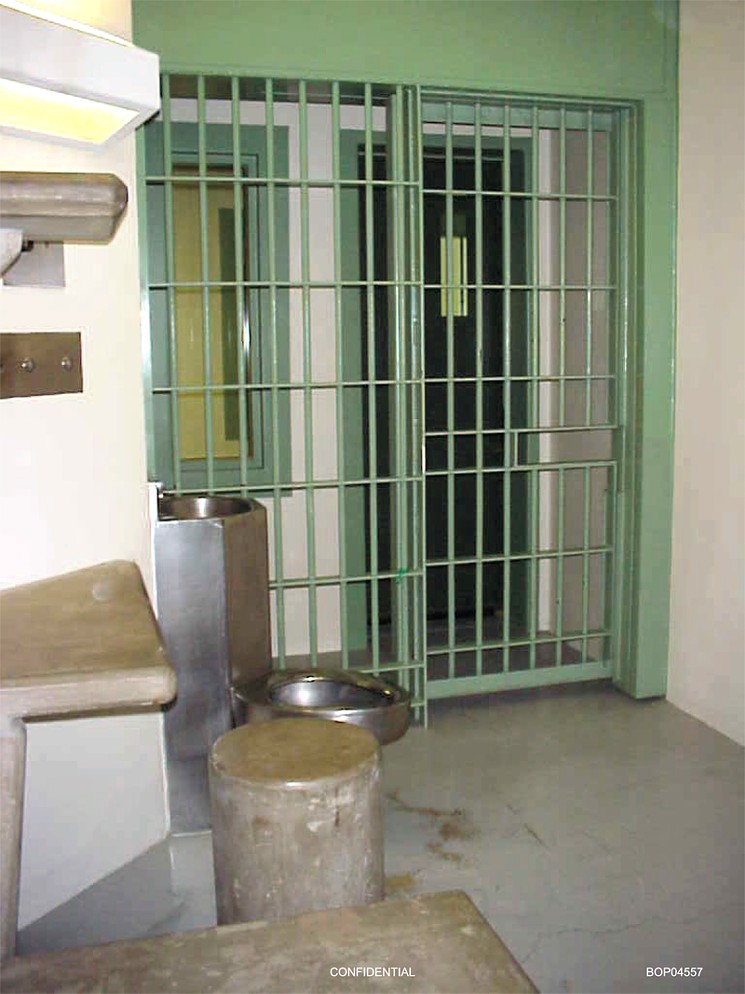
Several of Yousef’s co-conspirators in the 1993 WTC bombing ended up at ADX, too. Three of them managed to embarrass the Bureau of Prisons by exposing a basic security flaw — an incident that, from the government’s perspective, demonstrated a need to make the SAMs program even tougher and more all-encompassing.
One of the three, Mahmud Abouhalima, was sentenced to 240 years in prison. He spent the first eight in the general population of federal prisons in California and Kansas, with no unusual security restrictions. He even had a food-service job at one point, cooking for 1,700 prisoners. But on the morning of September 11, 2001, shortly after the attacks, he was moved into a solitary cell at USP Leavenworth, where he remained for the next two years, completely isolated from other inmates. He was then moved to ADX, yet without any SAMs being imposed; for several months, he could recreate with other prisoners, write and receive letters, use the library and so on.
That all changed in 2005, after NBC News aired a report that three World Trade Center conspirators imprisoned at ADX — Mohammad Salameh, Nidal Ayyad and Abouhalima — had been writing letters to suspected terrorists in Europe, primarily Muslim prisoners in Spain, “exhorting jihad.” The correspondence had actually taken place two years earlier; according to court documents, it stopped after BOP monitors advised the men that “inmate-to-inmate correspondence” was forbidden.
Abouhalima denied knowing that his pen pals were part of a terrorist cell, denied that his letters advocated violence of any kind; he would later describe the correspondence as “generic, casual, religious, and even personal.” But the FBI regarded the affair as a serious security lapse. The agency had information that indicated the letters were being used to recruit suicide bombers for a planned attack on Spain’s highest court.
Days after the news report aired, all three men were moved to H Unit and placed under SAMs. Their mail, phone calls and visits were cut off entirely for months. Access to recreation, whether in a solitary room or a cage outside, now required that the prisoner submit to a strip search by three officers and a lieutenant, both before and after the recreation period.
Abouhalima stopped going to rec. He went on a hunger strike, lost fifty pounds, and was subjected to force feeding. Eventually mail began to trickle in, from the few family members he could still communicate with, but for three years, he had no access to books or any other publications, except for back issues of the Denver Post and USA Today. Those restrictions were gradually eased, too, after word leaked out that another SAMs prisoner had been denied access to two books authored by Barack Obama because of security concerns. Still, magazines with any political content, such as The Nation, The Atlantic or even Time, arrived with most of their pages removed.“This little hole becomes my world, my dining room, reading and writing area, sleeping, walking. … I am virtually living in a bathroom, and this concept has never left my mind in ten years.”
tweet this
He would wait for months for a letter from his family to arrive, only to learn that it had been rejected. Uncles, grandparents, cousins fell ill and died, and he couldn’t even send condolences. There was nothing to focus on or hope for, no escape from the ever-present sights and smells of the cell he almost never left. He ate next to his toilet. As he put it in a court affidavit, “Sitting in a small box in a walking distance of eight feet, this little hole becomes my world, my dining room, reading and writing area, sleeping, walking, urinating, and defecating. I am virtually living in a bathroom, and this concept has never left my mind in ten years.”
He found himself battling rising paranoia. Every time the range door opened, he stood up, expecting someone to show up and take him away. But that order never came, and there was nowhere to go. After a while he got to the point where he just wanted to sleep and not have to face another day.
“I struggled with myself, telling myself that maybe next month, next year it will be better and I would be out of solitary confinement,” he wrote. “Eventually I lost all hope of getting out of segregation.”

A Kuwait native and Rutgers graduate, Ayyad is serving a 117-year sentence for the 1993 WTC bombing; like his co-defendant Abouhalima, he’s been in solitary confinement since the 9/11 attacks. But he never realized how noisy solitary confinement could be until he arrived at H Unit. The loud hum of a vent fan, coupled with the din of prisoners yelling, made it impossible to carry on a conversation with someone in the next cell. Some prisoners communicated with each other by shouting into the toilet, but sticking his face in a toilet was not something Ayyad was willing to do.
The only people Ayyad could talk to were staff. But you couldn’t really call them conversations. The officers just asked yes or no questions through the cell door: “Do you want rec today?” “Do you need something?” The longest conversation he could remember having was with a psychologist, who wanted to know why he wasn’t eating. It lasted three, maybe five minutes.
Sometimes the officers forgot to ask him about rec or were too busy to take him. Sometimes rec was canceled without explanation. Outside rec was alone in a cage, about five steps wide and ten steps long. There was a pull-up bar in the cage and a soccer ball, which was usually flat. But when rec didn’t happen for several days in a row, Ayyad felt his chest constrict and his thoughts fog over. When they told him he could go out again, it amazed him how relieved he felt — like a dog, really, jumping around his owner and begging for a walk, who finally sees the leash come out.
As the years dragged on, Ayyad began to keep a journal of his interactions with staff, timing every encounter. They rarely lasted more than twenty seconds. (“You need anything?” “No.”) Entire days went by with no words at all.
For prisoners in general population, ADX offers a “step-down program” that allows them to gradually earn more privileges — more time out of the cell, meals in common areas with other inmates and so on — and eventually transfer to a lower-security prison. H Unit doesn’t participate in the step-down program, but it has its own “phases,” and a prisoner’s movement from one to the next apparently depends on approval from several government agencies, including the Department of Justice, the FBI and the BOP. Ayyad found it all mysterious; no one explained what he had to do to get from one phase to the next, or how long it would take. After being in Phase II for more than two years, he was told he was going to Phase III. That meant he was now allowed on the range for ninety minutes a day with two other prisoners.
All the Phase III prisoners were moved to J Unit, which looked exactly like H Unit. The cells were the same. The noise was worse, thanks to the thunderous clatter of an exhaust fan. The officers spoke to him even less. He asked them what came after Phase III, if anything, and why this was supposed to be better than Phase II. No answers were offered.
In Phase III he met a prisoner who had come to H Unit from the Guantánamo Bay detention camp. The prisoner told him that at Gitmo he had four hours of recreation a day, access to a DVD player and movies in Arabic, congregational prayer and the Al Jazeera news channel. Compared to H Unit, Gitmo sounded better in every way.
In 2011, during a deposition in a lawsuit, Ayyad was allowed to use a staff restroom. It was the first time in ten years he had seen his face in a real mirror, the first glimpse of his undistorted reflection since 9/11. (Because glass mirrors can be turned into weapons, ADX cells are equipped with a stainless steel plate.) He was shocked at how much he had aged. He was 44 years old.“Incarceration provides no guarantee that an inmate will be unable to continue to participate in terrorist plots.”
tweet this
After seven years under SAMs, he could feel his memories slipping away. He struggled to recall verses of the Quran he once knew by heart. He couldn’t seem to concentrate enough to read or even watch television. The doctors prescribed antidepressants, which didn’t seem to help — they only made him feel weak. Although he was now allowed to have one meal a day with two other prisoners, he didn’t feel comfortable eating in front of other people. He preferred to eat in his cell.
The meticulously censored newspapers and magazines piled up on his cement desk, unread. He had little desire any more to jump through the hoops required to communicate with his family. A letter written in Arabic to his mother, submitted to the censors in June, wouldn’t be sent out until September, and a reply wouldn’t reach him until December. It was like trying to talk to someone on another planet, light-years away. What was the point?
On the worst days, he felt like there was a black cloud over his head, blocking his thoughts, even his vision. Sometimes the cloud became so big that he couldn’t even move. His heart would begin to race, the breath all but crushed out of him.
Maybe the ones in the dark cells, the ones who believed the light was poisoning them, maybe they had it right. The best thing was not to move. On weekends the corrections officers hardly came at all. Nobody went out to rec. The yelling stopped. Even the fan kicked on less. For a little while, at least, the place became as quiet as a graveyard, everyone silent in their own little grave.
“I have done — and continue to do — everything I can think of and all the government has asked to show that I should be given relief from the isolation,” Ayyad wrote in a court declaration. “I would like to have a fair chance to demonstrate to the government that I am not a terrorist, that my communications with my family and friends do not pose a threat to the security of the United States, and that I can be housed safely — as I was prior to 9/11 — in a high-security penitentiary.”
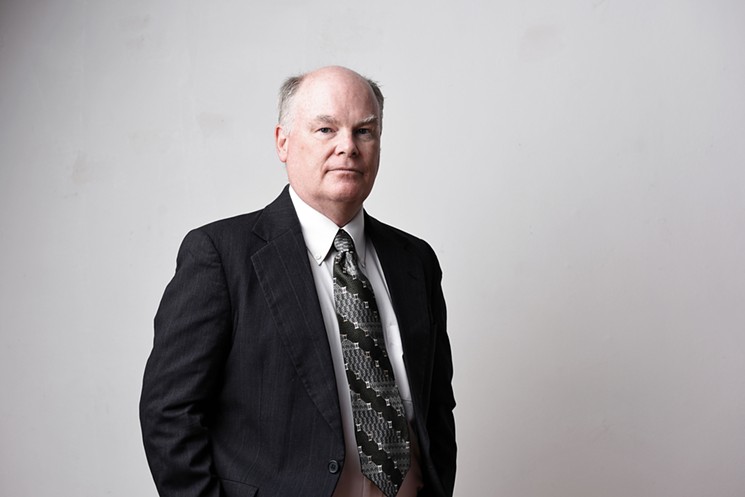
In court documents, Abouhalima and Ayyad both denounced terrorism and denied involvement in the 1993 WTC bombing. The government responded by citing some of the more damning evidence against them — like the letter found on Ayyad’s computer, taking credit for the bombing and stating that the calculations for the next attack would be more precise. Prosecutors argued that the 2003 letters to Spain provided ample reason for continuing vigilance. Senior U.S. District Judge Wiley Daniel agreed. “Incarceration provides no guarantee that an inmate will be unable to continue to participate in terrorist plots,” he observed.
While they were being rebuffed, another H Unit resident managed to score a rare victory in another federal courtroom. Khalfan Khamis Mohamed, serving a life sentence for the 1998 bombing of the American embassy in Tanzania, had his SAMs restrictions greatly increased after the 2005 NBC report — even though he had nothing to do with the letters to Spain. Representing himself, he went to court to seek the right to speak to his brother and to write to a wider circle of family and friends than the SAMs would allow. It took seven years for the case to get to a bench trial, at which point Judge Marcia Krieger ruled that the government had failed to follow proper procedures and that its denial of Mohamed’s requests had been arbitrary and capricious.
Paul Wolf, the attorney who took on Mohamed’s case shortly before trial, says he was careful to present the case as a matter of administrative law, not a full-blown challenge of SAMs. “What he was going for was fairly limited, and that’s why he won,” he says.
Even though the scope of the case was relatively modest, the government fought intensely to uphold the restrictions. Wolf says he faced numerous roadblocks in his attempts to communicate with his client; he’d responded to a request from the court for appointed counsel, had Mohamed’s okay to represent him, but had trouble obtaining all the paperwork he had to sign in order to take on a SAMs client. At one point the government requested a six-month stay in the case in order to investigate his background.
“The entire time I represented him, I was on this airport security list,” Wolf recalls. “Every time you go to the airport, any airport, you get pulled out of the line and searched. This went on for two to three years. As soon as I stopped representing him, that stopped, too.”
The Department of Justice appealed Kreiger’s ruling, to no avail. Then it evidently reached its own settlement with Mohamed. “They stopped communicating with me completely,” Wolf says. “The next thing I knew, he was out of H Unit, and they had completely lifted the SAMs.”“The entire time I represented him, I was on this airport security list. Every time you go to the airport, any airport, you get pulled out of the line and searched."
tweet this
Rovner, who represented Abouhalima and Ayyad, believes the lawsuits have had a moderating effect on the more severe aspects of the SAMs conditions. In fact, in recent years the government has moved several H Unit prisoners to what are known as communication management units in other prisons, removing the SAMs conditions in the process. CMUs exert tight restrictions on prisoners’ communications with the outside world — a counterterrorism team in West Virginia monitors calls and letters — but they allow for more time out of the cell and interaction with other inmates than is found in H Unit. Abouhalima is now in a prison in Indiana, Ayyad at one in West Virginia.
“Most SAMs would have to be lifted to get into a CMU,” notes Rovner. “It’s more about hyper-surveillance. They can’t communicate with people outside that unit, but they can communicate with each other. They seem to use them for people where they’re concerned about communications but not physical violence.”
CMUs have drawn lawsuits, too, challenging the alleged lack of due process in how prisoners get placed in one and the way the units have been used to silence prison writers and whistleblowers. There are similar concerns about SAMs, which have been used on occasion beyond H Unit to add an extra level of confinement for perceived troublemakers. Jeremy Pinson, a prisoner with a long history of mental health issues and suicide attempts, says he was placed under “temporary” SAMs in 2013 and moved to an ADX unit full of gang leaders; the unit’s mail was reviewed by a BOP intelligence officer and an FBI agent, and news channels were blacked out on their televisions. Pinson, who’s serving twenty years for writing a letter threatening to kill George W. Bush, was removed from the unit several months later, after the U.S. Attorney General declined to approve his SAMs.
“The extra isolation, to me, was debilitating,” Pinson reports. “To others, not so much, but we were all miserable.”
In one sense, the communication management units are a response to the security breach at ADX that allowed some of the most isolated prisoners in the system to communicate with extremist groups in Spain. But they are also, perhaps, an acknowledgement that intensive monitoring is possible without necessarily creating an environment as harsh as that of H Unit. The lawyers who take on SAMs cases realize that their clients are never going to evoke public sympathy, but they contend that depriving them of due process is a slippery slope. If the conditions of H Unit are acceptable for “the worst of the worst,” what about other criminals? Pre-trial detainees? Immigrants awaiting deportation?
“Is this the only fix for the things we’re concerned about?” Rovner asks. “I think that probably there are very, very few cases where this kind of extreme isolation is necessary. But the SAMs themselves prevent anybody on the outside from being able to make that determination.”

